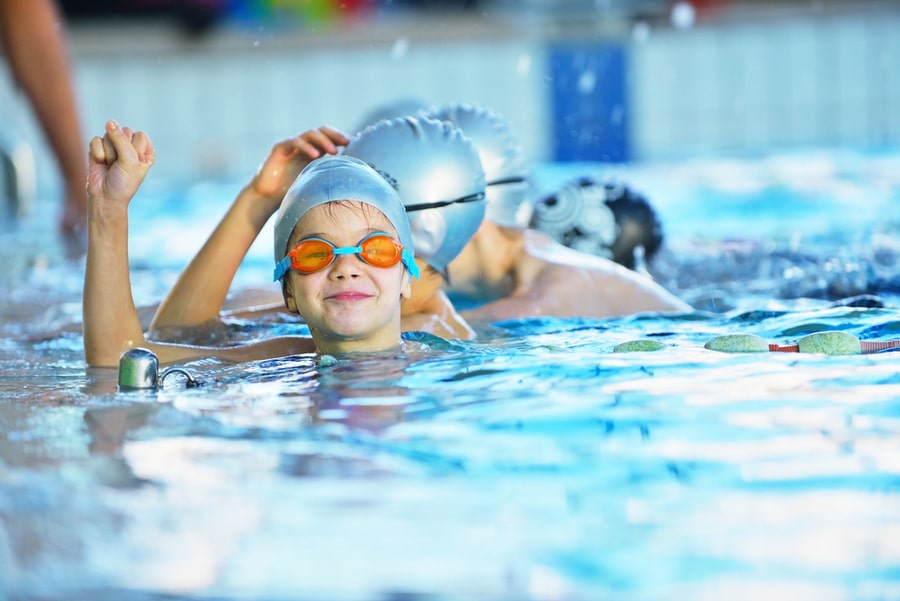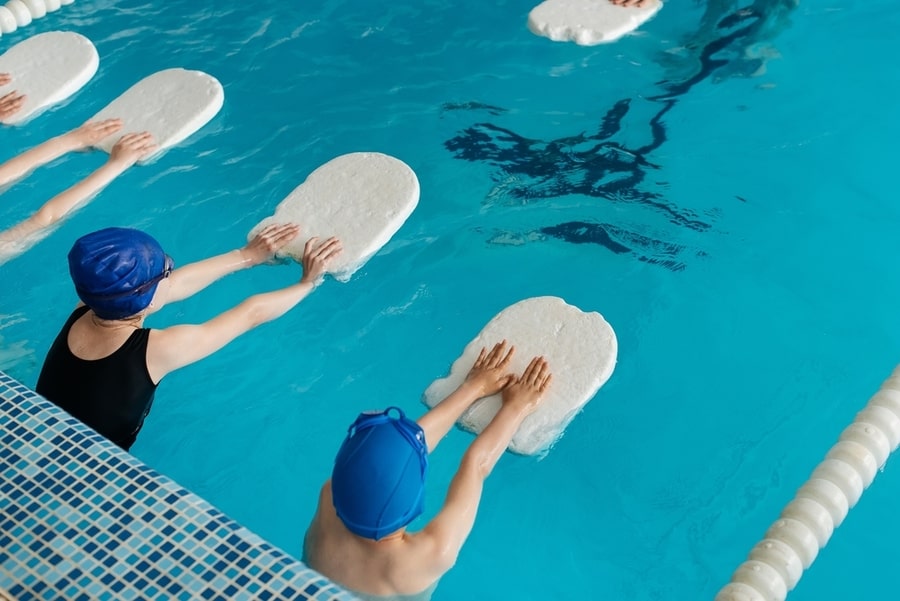Learning to swim should be a top priority for every child. Swimming is an essential life skill that can help prevent drowning, which is a leading cause of mortality among children. While swim lessons cannot entirely remove the possibility of drowning, they can greatly help to keep children safe around water and prevent disastrous water incidents. Children don't necessarily need to carry out advanced swimming strokes, but the ability to come back to the surface, stay afloat, and swim to a shallower area can certainly prevent fatal accidents.
Swim lessons are especially beneficial for children aged one to four, which is why it is critical to pick the best swim school for your child. It will ensure that children feel comfortable in the water while also having fun. However, deciding when and how to enrol your children in swim lessons is not as simple as teaching them how to walk. Is it advisable to begin when they are less than one year old? How frequently should they attend lessons? When it comes to children's swim lessons, it's not unusual for parents to feel lost by the myriad choices available and to have a number of questions. So, read on to help prepare you and your children for their very first swim lessons.
1. Starting early
Although most doctors recommend waiting until your child is at least a few months old, it's never too early to introduce your child to water. Consider parent-child swim lessons. They are readily available for children as early as three months of age. At Fulton Swim School, we take a measured approach to infant swimming and maintain a heavy emphasis on parent/child interaction in our courses to ensure that each participant makes the most progress possible. These classes also teach parents how to properly educate and protect their children by teaching them important water safety skills.
Toddlers are learning so much every day that adding swimming to their ever-growing list of physical abilities makes perfect sense. However, it is important to keep in mind that the purpose of swim classes is to teach your children how to swim safely in the water, not to prepare them to be an Olympic swimmer.
2. Choosing a Secure Environment
The environment in which children learn must be secure. Without a doubt, safety isn't something you can take for granted so you must verify it for yourself. The entire space should be cleaned regularly and well-kept. For security purposes, something should be in place to clearly define areas of deeper water and to keep children out of them. Emergency medical care and first-aid kit should be readily available, as well as posted safety restrictions.
Because young children are much more likely to ingest or breathe water, proper water treatment and chlorine levels are critical. When it comes to temperature, some pools are kept at roughly 27 degrees. Our pools at Fulton Swim School are maintained at a consistent 32 degrees, guaranteeing that all swimmers, whether children and adults, are indeed comfortable and warm.

3. Choosing the right programs and instructors
Look for lessons and teachers who adhere to criteria that include not only swim stroke techniques but also water survival skills. For instance, all children should learn how to rise from the water, swim at least 200 metres , and exit the water. Teachers should assess the progress of the students and provide ongoing feedback on their skill.
The student-to-teacher ratio should be reasonable. It should ideally be as low as possible, particularly for young children and inexperienced swimmers. In certain situations, the instructor should be able to keep all of the students within arm's reach and keep an eye on the entire class. Swim lessons reduce risk, and children must always be monitored in the water, whether or not they can swim. The group can grow as the children learn abilities, but it should never be larger than the teacher can safely monitor.
Look for programs for kids of all ages that:
- Have qualified and experienced instructors. A nationally approved learn-to-swim program should be used to teach and certify swim instructors.
- Teach proper water safety habits on, in, and around the water. Swimming should never be done by a child alone or with no proper supervision. Even when your child learns to swim, proper supervision in the water is one of the most critical strategies to effectively avoid drowning. Drowning is a stealthy, fast death that most families are unaware of. It happens to children who have caring, attentive parents and caregivers on a daily basis. Before entering a pool or natural body of water such as a lake, teachers should encourage students to always ask approval from their parents, adults, or swimming instructors.
- Teach them what to do if they find themselves in the water by accident. This includes self-rescue and other water proficiency skills. Lessons should include a variety of realistic scenarios, such as falling in and swimming while wearing clothes. Older children should also learn what to do if they notice someone suffering in the water and how to help them.
- Allow you to observe a class firsthand to determine whether it is appropriate for your child. Not all swim classes are made equal, and parents should shop around to find the greatest fit for their child. Do they spend the most of their time swimming, or do they wait for their turn for significant periods of time? Is one-on-one attention given to children?
- Require multiple sessions. You should be able to witness continuous improvement in your children's abilities after they begin classes. Continue classes until they have mastered basic water proficiency skills.
4. Deciding on the gear
Actually, all that is required for swim lessons is a body of water. However, you'll want your child to wear a snug swimsuit on their very first lesson. The other patrons will appreciate you remembering the swim diapers if your child isn't totally toilet trained already. Many children might also want to try swimming with goggles. They will be useful for learning to swim.
On the other hand, water wings are given far too much confidence. From a safety standpoint, they are not like a lifejacket. When wearing water wings, a child can still be caught on their belly, face down in the pool. Water wings also make it difficult for a toddler to learn to swim. They restrict a child's arm movement and give them a false sensation in the water. Despite the fact that arms are not as heavy as legs, they will sink quickly.

5. Being their cheerleader
Swim lessons should not be abandoned because your child is afraid of the water. Fear of water is normal, and some children are more terrified than others. While you should never force a child to undertake something they are afraid of, quitting is also not a smart option. Begin more slowly and with plenty of positive encouragement. Encourage them! Your child is learning a new and difficult skill. Support them and congratulate them on their accomplishments and work. While some parents employ incentives and prizes in their everyday activities, most instructors agree that the best thing a parent can do is simply be a cheerleader during swim classes.
Do not be afraid to inquire about the most crucial skill or two that your child has been working on and/or is having trouble with. Then take your kid to the pool and let them have some fun. You don't have to spend your entire time in the pool working on skills, but you should spend 5 to 10 minutes of your hour-long pool visit reviewing the lessons with your youngster. That regular exposure is beneficial.
What policies does the FSS have in place during the COVID-19 pandemic?
Our students’ safety and protection are our top priorities. Always. While the coronavirus is still active, we will provide the healthiest environment for our students and families.
1. As we work together to combat the virus, we go beyond making our secure facilities even more secure. Santising stations, staff wearing masks in and out of the pool, clean facilities..
2. FSS's highly qualified teachers and friendly team members are available to answer your questions and address your concerns about our commitment to safety.
3. We will continue to have a positive and productive atmosphere that prioritises the comfort of our family.
